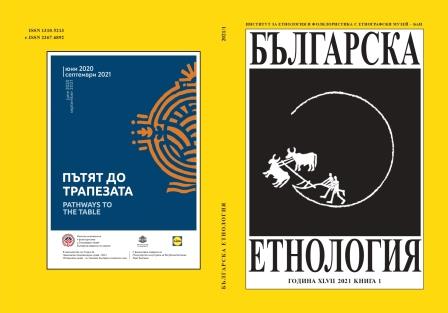Жизненият свят на гагаузите от гр. Ямбол.Част 2. Идентификационните стратегии като всекидневен групов оп
The Lifeworld of the Gagauz from the Town of Yambol. Part II: Identification Strategies as an Everyday Collective Experience
Author(s): Galin Georgiev, Dinka AngelovaSubject(s): Anthropology, Social Sciences, Customs / Folklore, Cultural Anthropology / Ethnology, Culture and social structure
Published by: Институт за етнология и фолклористика с Етнографски музей при БАН
Keywords: Gagauz; Yambol; Collective memory and identity; Everyday life and culture; City
Summary/Abstract: The proposed text is a continuation of the publication on the same topic in issue 2(2020) of the journal “Bulgarian Ethnology“. There we reflected on the problem of the establishment and ethnocultural adaptation of a segment of the Gagauz population from east Thrace in the southeastern Bulgarian lands and especially in the town of Yambolafter the Balkan Wars. The main focus of our work is to reveal the dynamics in the identity of this group of migrants according to the new conditions within the Bulgarian state and the urban national-cultural processes in the twentieth century. The proposed two texts mark another stage of a longer and more comprehensive study conducted by two authors on the problems of the inconstant historical destiny and the ethnocultural development of the so-called “Thracian“ or “Edirne“ Gagauz. However, similarly to the first part of the study, here we do not look through the stories of our informants completely separately from one another, but present their fables in parallel and in an interconnection. Nevertheless, we pay special attention to two of the cases - that of Meri Atanasova and especially of Margarita Teneva, to the extent that in general, they represent an attempt to apply the case study method. In our opinion, this way, by focusing on details of their interviews, including the assessment of their behaviour during the research, their reactions, comments, etc., a number of aspects of their processes of identification as an immediate everyday experience can be distinguished. This makes it possible to trace its very formation, as well as its constant modelling throughout their entire life-space, i.e. in small and large communities and groups, while being their members (as heirs and forebears), and whose feelings, thoughts, impressions and ideas personify, accumulate and transmit.
Journal: Българска етнология
- Issue Year: 2021
- Issue No: 1
- Page Range: 100-118
- Page Count: 19
- Language: Bulgarian

